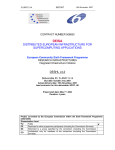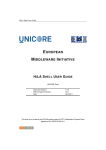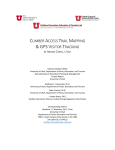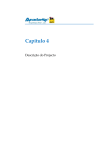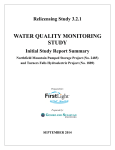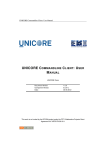Download HiLA User Guide
Transcript
HiLA User Guide
E UROPEAN
M IDDLEWARE I NITIATIVE
H I LA U SER G UIDE
UNICORE Team
Document Version:
EMI Component Version:
Date:
1.0.0
2.2
April 2011
This work is co-funded by the EC EMI project under the FP7 Collaborative Projects Grant
Agreement Nr. INFSO-RI-261611.
HiLA User Guide
Contents
1
Preface
1
2
Current Usage
1
3
Concepts
2
3.1
Location and Resources . . . . . . . . . . . . . . . . . . . . . . . . . . . . . .
2
3.2
Programmatic use . . . . . . . . . . . . . . . . . . . . . . . . . . . . . . . . .
2
3.3
Exceptions . . . . . . . . . . . . . . . . . . . . . . . . . . . . . . . . . . . . .
3
4
The Grid API
3
4.1
Grid . . . . . . . . . . . . . . . . . . . . . . . . . . . . . . . . . . . . . . . .
5
4.2
Site . . . . . . . . . . . . . . . . . . . . . . . . . . . . . . . . . . . . . . . .
6
4.3
Storage . . . . . . . . . . . . . . . . . . . . . . . . . . . . . . . . . . . . . .
6
4.4
Task . . . . . . . . . . . . . . . . . . . . . . . . . . . . . . . . . . . . . . . .
6
4.5
Job . . . . . . . . . . . . . . . . . . . . . . . . . . . . . . . . . . . . . . . . .
7
4.6
Reservation . . . . . . . . . . . . . . . . . . . . . . . . . . . . . . . . . . . .
7
4.7
File . . . . . . . . . . . . . . . . . . . . . . . . . . . . . . . . . . . . . . . .
7
5
Development
7
6
Implementations
8
6.1
8
7
UNICORE 6 . . . . . . . . . . . . . . . . . . . . . . . . . . . . . . . . . . . .
References
11
HiLA User Guide
1
1
Preface
Highly dynamic features and security concerns often make it difficult for programmers to easily
develop clients accessing Grids. There is a lot of programming overhead involved for each call
to a Grid resource, although many of these tasks are structured similarly. A universal, highlevel API can alleviate the need to perform the tedious and repetitive tasks of accessing Grid
resources and let the developer focus on the purely functional aspects of programming. The
extra amount of work necessary to access a site is hidden behind a concise interface.
Another advantage of a cleanly defined API is the opportunity to implement for multiple backend Grid environments. The HiLA API currently supports two implementations, one for UNICORE 5 and more recently another one for the Web services based UNICORE 6. An implementation for OGSA-BES is in a development state. Additional backend implementations are
conceivable to support other Grid middlewares in the same uniform way.
Rather than designing a task focused API, HiLA takes a resource oriented approach to the
definition of the Java interfaces. The linkages between the resources on the Grid are approached
in a consistent manner. A resource is Locatable and possesses a Location. As such, there is a
generic mechanism in place for navigating the linkages. For example, a Site has a number
Storages, a Storage contains a number of Files and a Site references its running Tasks. So
different underlying Grid infrastructures become browsable in a uniform way. Analysing and
using Grid resources can then be as easy as browsing a UNIX file system.
The API uses a Factory mechanism to dynamically load particular implementations. Multiple
implementations of the API can co-exist within the lifetime of a program execution, and it encourages late binding to a specific implementation, selectable at runtime. Location of the HiLA
resources are based on URI’s, where the scheme is used to select a particular implementation.
This document describes the HiLA API from a user’s point of view. Of course, users of APIs
are developers. There is a separate developer guide available for those, who want to develop
additional implementations of the abstract interfaces.
Originally, HiLA was named Roctopus, which is why you will find references to this name as
well [Hagemeier2007] [roctopus_cgw05].
2
Current Usage
HiLA is a convenient toolkit for building web interfaces or command line environments for
Grids, and is used by the DESHL suite of tools developed in the JRA7 activity of the DEISA
project. In the A-WARE project, we are using HiLA as the basis for a Grid agent component
to be plugged into a service bus, which is then used as for building higher-level orchestration
services for Grids.
HiLA is an API for accessing Grid resources of different middleware in a consistent manner. It
has been implemented for UNICORE versions 5 and 6, and an OGSA-BES implementation is
also available. HiLA is in use in various places in different Grid access libraries. The DEISA
Services for Heterogeneous management Layer (DESHL) has been implemented using HiLA
HiLA User Guide
2
right from the start. This severely eased the shift to UNICORE 6, as HiLA provides the same
interface for both middlewares. In the German AeroGrid project [aerogrid], a JavaGAT adaptor
has been implemented on top of HiLA, thus enabling the use of UNICORE 5 and UNICORE 6
through GAT and this adaptor.
3
3.1
Concepts
Location and Resources
The key concept in HiLA is that every Resource can be referenced by a URI.
The generic URI structure in HiLA (for Grids) looks like this:
<scheme>:/sites/<site-name>/tasks/<task-id>/wd/files/<file-name>
<scheme>:/sites/<site-name>/storages/<storage-name>/files/<file- ←name>
The <scheme> placeholder is the implementation specific part of the URI. In real scenarios, it
will be something like unicore6, unicore5 or ogsa.
The actual URI is pattern matched against the patterns of registered ResourceTypes.
Staying with the Grid example, <site-name> will be the name of the site, as it has been
discovered by the configuration of HiLA Grid API. <task-id> is the id of the task, which is
generated by the middleware. This enables us to located particular tasks only from this reference. The same holds for <storage-name>, where all storages exposed by the middleware
at the site under consideration will be valid values for <storage-name>.
This follows a regular pattern, where collections and their contents alternate in the URI structure. Collections are sites, tasks, storages, and files. While all of these do have
equivelents in the Java interfaces, they are less important, because they do not offer mor functionality than any other Locatable artifact.
The concept of artifacts being locatable is generic and extensible. Which artifacts in the Grid
can be referenced by HiLA, will be subject of the following sections.
3.2
Programmatic use
Location loc = new Location("unicore6:/sites/");
Resource res = loc.locate();
As you can see, a Location has a locate() method, with which you can locate the
Resource behind this Location. Of course, it is only this simple when dealing with generic
Resources. Most of the time, however, you will want to deal with specific Resources, on
which you can call certain actions. Have a look at the following example:
HiLA User Guide
3
Location loc = new Locatin("unicore6:/sites/DEMO-SITE_201005231038 ←");
if(loc.isLocationOfType(Site.class) {
Site site = (Site) loc.locate();
}
Another option would be (assuming loc is still the same):
Resource res = loc.locate();
if(res instanceof Site) {
Site site = (Site) res;
}
3.3
Exceptions
A base set of Exceptions have been defined to represent certain error or exceptional conditions.
All of them are derived from HiLAException.
• HiLAException
– HiLAAccessDeniedException
– HiLACannotContactSiteException
– HiLAFactoryException
– HiLAIdentityException
– HiLALocationPatternException
– HiLALocationSyntaxException
– HiLANotImplementedException
– HiLANotSupportedException
– HiLAResourceAlreadyExistsException
– HiLAResourceNotFoundException
4
The Grid API
The HiLA API with its notions of Location and Resource is very generic and merely
allows to create a navigable hierarchy of Resources that have Locations.
The basic artifacts, which can be accessed by HiLA and referenced via HiLA locations, are:
• Grid
• Site
HiLA User Guide
4
• Storage
• Task
• Reservation
• File
Figure 1: Architectural overview of HiLA
The HiLA Architecture figure shows the interrelationships between the various artifacts. A
Grid is made up of a number of sites, which in turn contain tasks and storages. Storages contain
files, which can be imported to, exported from or transferred among storages. Tasks also have
a storage, which is their working directory. One can thus access the working directory of a task
at any time, if the underlying implementation supports it.
HiLA User Guide
5
Figure 2: UML class diagram of HiLA API
The UML class diagram shows the main classes within the abstract HiLA API. An implementation of HiLA has to implement the interfaces as appropriate and support the given operations.
Operations on the interfaces will be described in the following.
4.1
Grid
Grid locations are structured like <scheme>:/. For example, a grid location for the UNICORE 6 implementation of HiLA would look like unicore6:/. As shown in the above figure
and more specifically in the UML diagram, a Grid consists of an arbitrary number of Sites.
You can query the Sites belonging to a Grid by calling the getAllSites() method, which
returns a List of Sites. If you know the Location of an entity, to which you want to gain
access, you can locate() it. The locate() method returns a Locatable, which you
may have to cast to the appropriate type.
HiLA User Guide
4.2
6
Site
Site locations are structured like <scheme>:/sites/<site-name> A Site location for
the UNICORE 6 implemenation looks like unicore6:/sites/Alpha-Site. Sites implement both the Locatable and Submitable interfaces. While Locatable has been explained
before, the Submitable interface is used for anything that one can submit jobs to. Hence, it
implements the methods submit(), getTasks(), and getTask().
4.3
Storage
Storage locations are structured like
<scheme>:/sites/<site-name>/storages/<storage-name>.
There is a special twist to Storage Locations, as a Task also has a Storage, where its execution
takes place. Thus, a Storage Location can also look like
<scheme>:/sites/<site-name>/tasks/<task-name>/wd
where wd means working directory. Storages belonging to Sites can be retrieved by calling
getStorages() on a Site object. From a Task, one can directly jump into the working
directory by calling getWorkingDirectory() on the Task, which actually returns a File,
but that is what you want anyway.
Examples of Storage Locations for the UNICORE 6 implementation would be
unicore6:/sites/Alpha-Site/storages/home and
unicore6:/sites/Alpha-Site/tasks/ \
79258434-f295-11dd-b58a-001f160cb28c/wd.
4.4
Task
A Task is something that can run concurrently with the rest of the code, e.g. a file transfer or
remote Job. Tasks can be monitored.
Task locations are structured like <scheme>:/sites/<site-name>/tasks/<task-name>.
An example Task Location for the UNICORE 6 implementation looks like this unicore6:/sites/
\
Alpha-Site/tasks/79258434-f295-11dd-b58a-001f160cb28c.
One can register listeners on Tasks that listen for changes of its status.
Task t = ...;
t.registerStatusChangedListener(new StatusChangeListener() {
public void statusChanged(StatusChangedEvent e) {
System.out.println("Status of Task: " ++ e.getTask(). ←getLocation() ++ " changed to " ++ e.getStatus());
}
});
HiLA User Guide
4.5
7
Job
A specialization of the generic Task is a Job, which has an exit code, outcome files, a working
directory etc. Unlike ordinary Tasks, Jobs have a Storage representing the Jobs’ working
directory, which can be browsed like any other Storage.
4.6
Reservation
Starting with version 2.2, Sites implement the Reservable interface, which allows for
creating reservations based on ResourceDescriptions. Since not all Sites or even
Grid middleware support this, it is very likely that calling the reserve method throws a
HiLANotImplementedException or HiLANotSupportedException.
Jobs can be run inside Reservations.
4.7
File
File locations are structured like
<scheme>:/sites/<site-name>/storages/<storage-name>/files/<file-name>.
Again, as Tasks have associated Storages as well, and these Storages also contain Files, an
alternative structure of a File’s location is
<scheme>:/sites/<site-name>/tasks/<task-name>/wd/files/<file-name>.
Example File Locations for the UNICORE 6 implementation look like the following:
unicore6:/sites/Alpha-Site/storages/home/files/.bashrc and
unicore6:/sites/Alpha-Site/tasks/\
79258434-f295-11dd-b58a-001f160cb28c/wd/files/stdout.
5
Development
If you would like to develop using the HiLA API, you will most likely start with the Location of a Resource serving as an entry point into the Resource hierarchy of your problem
domain. It could be something as simple as a pure scheme name appended with »:/«, such as
unicore6:/.
In code, this would look something like this:
Location loc = new Location("unicore6:/sites/DEMO-SITE_201004261103 ←");
if(loc.isLocationOfType(Site.class)) {
Site site = (Site) loc.locate();
// do something with that site
}
HiLA User Guide
8
As you can see, you can start from a location and have it locate() the resource. Generally,
the locate() method returns objects of type eu.unicore.hila.Resource or one of its
decendants. You can already query the Location, if it points to a certain resource type. That
way, it is not necessary to locate (and instantiate) the actual resource, if you already know that
the Location points to the wrong resource type.
If you want to be even more sure about the type of Resource returned by locate(), you
can check it using the instanceof operator.
Resource res = loc.locate();
if(res instanceof Site) {
Site site = (Site) res;
}
However, this should be obsolete, if the implementation of the API does not misbehave.
6
Implementations
The following table shows the relationships among the different implementations of HiLA APIs.
At the base, there is hila-api, which is generic and does not know anything about Grid or other
specific resources. It merely provides the basis for implementing resource types and giving
them structured locations.
On the next leve, there are hila-grid-api and hila-other-api, where the latter just represents any
other API that is based on hila-api.
hila-unicore6
hila-grid-common
hila-grid-api
6.1
6.1.1
hila-other-api
hila-api
UNICORE 6
Additional Capabilities
Orchestrator
The UNICORE 6 implementation supports the service orchestrator, which is used as a broker
to submit jobs to Sites matching the resource requirements given in the job description.
6.1.2
Configuration
Configuration for this implementation is expected in the user’s home directory under
~/.hila2/unicore6.properties. The format of this file is the following
HiLA User Guide
9
Basic Configuration
This configuration should be used whenever you can use your credentials directly, i.e. you have
the keystore with your private key at hand. The next section will describe what you have to do
if you configure HiLA to be used as an agent, e.g. inside a portal, and users have issued trust
delegations, which allow the agent to act on their behalf. Another use case for the advanced
configuration below is when you have multiple identities.
hila.unicore6.registries = https://localhost:8080/DEMO-SITE/ ←services/Registry?res=default_registry
hila.unicore6.keystore = /home/demo/.hila2/demo.jks
hila.unicore6.alias = demo user
hila.unicore6.password = the!user
# The following properties are optional
hila.unicore6.keystoretype = jks
hila.unicore6.truststore = /home/demo/.hila2/demo.jks
hila.unicore6.truststorepassword = the!user
hila.unicore6.truststoretype = jks
with the following meanings of the elements.
hila.unicore6.registries
A space separated list of UNICORE 6 registries. These registry URLs should be provided
to you by administrators of your Grid infrastructures.
hila.unicore6.keystore
A Java KeyStore in PKCS12 or JKS format. The path can be relative to the configuration
file.
hila.unicore6.alias
The alias of the key inside the keystore.
hila.unicore6.password
Password to open the KeyStore.
hila.unicore6.keystoretype
Type of keystore: JKS or PKCS12. Defaults to JKS
hila.unicore6.truststore
A truststore with certificates to be used for verification. If not given, keystore will also be
used as truststore. The path can be relative to the configuration file.
hila.unicore6.truststorepassword
Password for truststore. If not given, the keystorepassword will be used.
hila.unicore6.truststoretype
Should be JKS, which is the default.
HiLA User Guide
10
Optional Configuration
hila.unicore6.timeout = 5000
hila.unicore6.refresh = 100000
hila.unicore6.separatetss = false
hila.unicore6.timeout
Timeout in ms for site discovery.
hila.unicore6.refresh
Time in ms until the sites cache will be refreshed from the registries. Until then, previously discovered sites will be returned.
hila.unicore6.separatetss
Whether to represent multiple target system resources belonging to a single site as separate sites, appended with the creation time to distinguish them. The value of this property
should be true or false. The default value is false.
Multi-User Configuration
This configuration can be used for multiple users, either in case you have multiple identities and
need to distinguish among them, or when you are an agent that acts on other user’s behalf. In
the latter case, users will have issued trust delegations.
Security Profiles
hila.unicore6.keystore = /home/demo/.hila2/demo.jks
hila.unicore6.alias = demo
hila.unicore6.password = the!user
# Demo 1
hila.unicore6.profile.demo1.keystore = /home/demo/.hila2/demo1.jks
hila.unicore6.profile.demo1.alias = demo1
hila.unicore6.profile.demo1.password = the!user
# Demo 2
hila.unicore6.profile.demo2.keystore = /home/demo/.hila2/demo2.jks
hila.unicore6.profile.demo2.alias = demo2
hila.unicore6.profile.demo2.password = the!user
The multi-user configuration depends on the existance of an implementation of the Config
interface. This can be configured via the hila.unicore6.config property. The default
value for this property is
eu.unicore.hila.grid.unicore6.security.SimpleProfileConfig, which
can use profiles as configured above. If you want to use any of the configured profiles, then the
HiLA User Guide
11
profile name needs to be added to the HiLA Location of the resources, e.g. unicore6:/demo1@sites
or unicore6:/demo2@sites will use the keystores as configured above. Note that this
does not have anything to do with trust delegation, each of the profile configurations will be
used as primary identities to access Grid resources.
Trust Delegation
In order to use trust delegation, you need to use a different implementation of the Config
interface. The unicore.properties file should contain the following line:
hila.unicore6.config = eu.unicore.hila.grid.unicore6.security. ←TDConfig
TDConfig requires SAML assertions in the directory ~/.hila2/saml-assertions.
SAML assertions can be generated e.g. using the UNICORE Commandline Client (UCC)
and its issue-delegation command. HiLA as an API does not offer this functionality
at the moment. Trust delegation in HiLA is usually used in locations where the user credentials
needed for creating the delegation are not available. Thus, HiLA as the receiver of such SAML
assertions does not require this functionality.
7
References
[1] [Hagemeier2007] Björn Hagemeier and Roger Menday and Bernd Schuller
and Achim Streit. "A Universal API for Grids". Bubak, M., Turala, M.
& Wiatr, K. (ed.) Cracow Grid Workshop ’06 Academic Computer Centre
CYFRONET AGH, 2007, pp. 312-319 ISBN 83-915141-7-X.
[2] [roctopus_cgw05] Menday, R.; Kirtchakova, L.; Schuller, B. \& Streit, A. “An
API for Building New Clients for UNICORE” Proceedings of the Cracow
Grid Workshop ’05, 2005
[3] [aerogrid] http://www.aero-grid.de/














